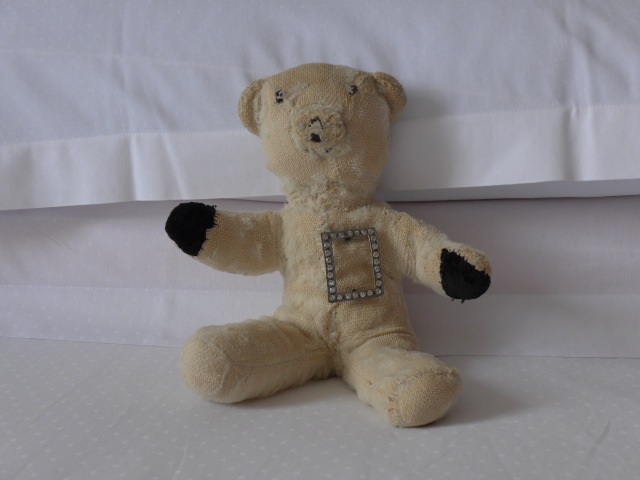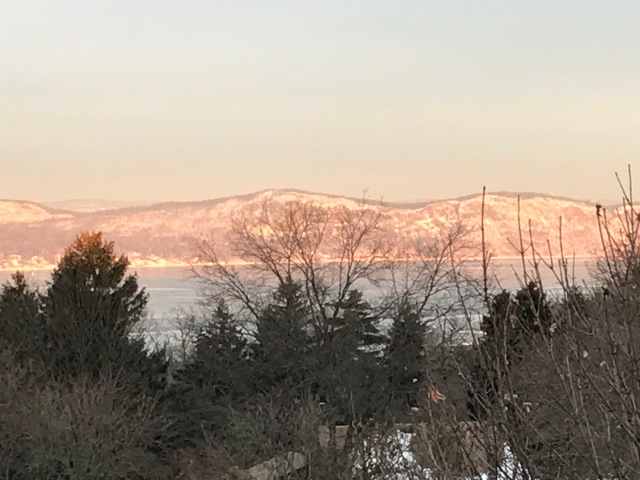By Caitlin Kelly

For Jews and Christians, this is an important time of year — Passover begins March 30 and, for Christians, this is Holy Week, culminating April 1 this year with Easter.
Jose and I were back in church this week for Palm Sunday, our first visit since Christmas Eve. It was good to see old friends, although painful to realize, in their faces and their stooped postures, the passing years.
One man, a tall, imposing former schoolteacher, now bends almost double, accompanied by his nurse. A white-haired woman sits alone, now widowed. Once-tiny children are now in their 20s, married or engaged or living far away.
There are few places in life, beyond one’s own family, to intimately witness others’ lives firsthand, sharing the joy of baptisms and marriages or the sudden appearance of someone’s name on a prayer list.
No matter how little we may have in common outside the building, we’re community within it.
I rarely address questions here of faith, religion or spirituality.

This amazing image was across the hall from my hotel room in Rovinj, Croatia, an 18th century building that was the town’s former bishops’ residence
Not because it’s not a matter of interest or reflection for me, but out of respect for Broadside’s many readers who are agnostic, atheist and those who may have suffered brutal treatment within a religious tradition.
And some of you once followed a belief system and chose to leave it.
I’m not a “cradle Christian” — i.e. someone born into a deeply religious church-going family. Quite the opposite. My father is avowedly atheist and my mother became a devout Catholic when I was 12.
But I attended an Anglican (Episcopal) boarding school that subjected us to Sunday nights of prayers and slide shows by visiting missionaries, and put me right off religion for years. We sang hymns, some of which (All Things Bright and Beautiful!) I still love deeply.
I chose to be baptized when I was 13, in Toronto.

But my relationship with church has been intermittent.
I first came to St. Barnabas, a lovely small stone church in Irvington, New York, (the Hudson river town just south of ours), in a moment of panic and crisis, late on Christmas Eve of 1996. My mother had flown in from Canada, arriving drunk. The evening didn’t improve from there., I dropped her at a local hotel and, suddenly totally alone for the holidays, had no idea where to go or what to do.
I slipped into one of the dark wooden pews at St. B’s, deeply grateful for its welcome.
I’ve been attending services there, off and on, since then. It’s felt, at times, like a poor fit for me, someone who isn’t — like many of its members — a perky stay-at-home mother or a corporate warrior working on Wall Street or at a major law firm. I’ve made a few friends there, but it’s not a group into which I naturally fit in easily.
In some ways, though, I think that’s important.
One value of religious or spiritual community is its shared yet sometimes invisible yearning for wisdom and tradition, for evidence of faith and hope — not the usual pattern-matching that leads us to spend time only with others who look and sound just like us. (Don’t get me wrong — if a place feels genuinely unwelcoming, fleeing can be a wise choice.)
In American culture, so devoted to the pursuit of temporal and visible wealth and power, I increasingly crave a place of spiritual rest and respite. It’s helpful to be reminded of deeper values.
To sit in those polished pews — where worshipers have been gathering since 1853 — connects me to a larger world and its history.

I also treasure the esthetic experience of our church’s stained glass windows, its lovely organ, (donated in 2000 by one member), its mosaic altar, its physical intimacy.
I enjoy the familiar liturgy. One of its traditions is the Peace — greeting one another with a hug or handshake — offering our wishes for the peace of the Lord to each other. It’s one of my favorite moments.
My husband Jose, is a devout Buddhist, in the Dzogchen tradition, but accompanies me to services. I’ve met his lama, Surya Das, and spent a week with them in a silent Buddhist retreat in the summer of 2011 before Jose and I married.
He’s also a PK, a preacher’s kid, whose father was a Southern Baptist minister in Santa Fe, New Mexico, so he is blessedly at home in many spaces of quiet contemplation.
Do you have a spiritual home?
























